2010 年 3 月翻译资格英语高级口译笔试真题及答案
Directions: In this part of the test, you will hear a passage and read the same passage
with blanks in it. Fill in each of the blanks with the word or words you have heard
on the tape. Write your answer in the corresponding space in your ANSWER BOOKLET.
Remember you will hear the passage ONLY ONCE.
Today, we'll talk about what other effects watching TV might produce on children.
Children should be _______ (1) a lot of television, many experts and parents agree,
but there is at least one circumstance when it might be beneficial: _______ (2).
A recent study conducted by Italian researchers found that children _______ (3)
immediately preceding and during blood tests experienced less pain than children
whose mothers _______ (4) during the procedure, or children whose mothers were
present but _______ (5).
The research, led by Carlo Brown, MD, at the University of Siena, is published in
the Archives of Disease in Childhood, _______ (6) the study. None received any type
of anesthesia; the children and their mothers _______ (7).
Both the group whose mothers attempted to distract them from the blood tests and
those whose mothers simply observed reported _______ (8) than the group who watched
cartoons. For that group, the levels of pain were less and the children were better
able to _______ (9).
One of the possible explanations is that children might have _______ (10) during
the procedures, exacerbating their perception of pain. "The higher pain level
reported by children during _______ (11) shows the difficulty mothers have in
interacting positively _______ (12) in their children's life," the authors write.
However, they stressed that _______ (13) still provided benefits, noting that the
children would _______ (14) during the procedures. "Indeed, children state that
having their parent present _______ (15) when in pain," say the authors.
Another possibility offered for consideration is the notion that the _______ (16)
might release pain-quelling endorphins. Endorphins, _______ (17) produced by the
pituitary gland, resemble opiates in their ability to produce analgesia and a sense
of well-being. In other words, they might _______ (18).
In any case, the study results suggest that health workers should _______ (19) to
watch television during painful procedures _______ (20).
Part B: Listening Comprehension
Directions: In this part of the test there will be some short talks and conversations.
After each one, you will be asked some questions. The talks, conversations and
questions will be spoken ONLY ONCE. Now listen carefully and choose the right answer
to each question you have heard and write the letter of the answer you have chosen
in the corresponding space in your ANSWER BOOKLET.
Questions 1 to 5 are based on the following conversation.
1.
(A) A change in French eating habits.
(B) A boom in long-hour meals in France.
�
(A) A variation in food supply.
(C) The origin of hamburgers.
(D) The home of the sit-down mid-day meal.
2.
(B) A change in the workforce.
(C) A rise in food prices.
(D) A fall in white-collarization.
(A) Bakeries now offer a limited range of albeit excellent products.
3.
(B) There are about four kinds of bread, breakfast and dessert pastries.
(C) Bakeries sell sandwiches mainly in the working-class areas.
(D) France is currently witnessing a boom in sandwich business.
4.
(B) Men, more likely to be working behind a jackhammer, need to eat so much.
(C) Women make up almost half the labor force in France now.
(D) Women have to pick up the children late from the day-care center.
5.
products.
(B) Because the bakeries have offered something that's very close to what is called
fast food.
(C) Because the hamburgers have ham and butter in them.
(D) Because the hamburgers do not cost so much as those offered by McDonald.
(A) Because the bakeries have adapted the idea of fast food and made it French
(A) Men usually like to eat more hamburgers than women do in France.
(A) Three.
(A) To intensify Tokyo's role in peacekeeping missions abroad.
Questions 6 to 10 are based on the following news.
(B) Four.
6.
(C) Eleven. (D) Eighteen
7.
(B) To stop the country's air force transport mission in Iraq.
(C) To override the lower house's decision.
(D) To approve the Democratic Party's bill to continue the mission.
8.
(A) Worsening water scarcity.
(C) Triggering mass displacement.
9.
(B) To forge and sign a peace treaty pledged by both sides.
(C) To dispel his skepticism over chances for a deal before he leaves office.
(D) To open a 44-nation conference over the Middle East issue.
10. (A) 60%.
(C) 21%.
(B) Increasing risks of diseases.
(D) Reducing the population in Asia.
(A) To resume peace talks which have been halted for a long time.
(B) 26%.
(D) 20%.
Questions 11 to 15 are based on the following interview.
11. (A) What to do to control crime.
(B) What role a lawyer plays in a court case.
(C) How to tell a hardened criminal from a first-time offender.
(D) How to convict a criminal and put him in prison.
12. (A) Deterrence.
(B) Quick conviction.
�
(C) The social structure.
(D) The economy.
13. (A) Education programs are not so effective as required.
(B) Drug treatment programs are insufficiently funded.
(C) Some rehabilitation programs inside prisons have been stopped.
(D) More people are convicted than prison space can accommodate.
14. (A) These programs are mainly intended for the kingpins of drug deals to get
rehabilitated.
(B) These programs are currently carried out in most states in the country.
(C) These programs aim to develop a culture inside the prisons.
(D) These programs have psychological and educational components.
15. (A) Because gangs start in prisons and make prison a repressive experience.
(B) Because criminals tend to be repeat offenders.
(C) Because there is no stigma attached to most criminals.
(D) Because society doesn't look at released prisoners with disdain.
(D) Social.
Questions 16 to 20 are based on the following talk.
16. (A) How to interact with colleagues and clients face to face.
(B) How to make effective telephone conversations.
(C) What skills are needed to get and hold down a job.
(D) What makes for an excellent ability to express yourself.
17. (A) (A) Managerial. (B) Technological.
(C) Financial.
18. (A) Basic to advanced knowledge of computer application.
(B) Ability to calculate all transactions, profits and costs.
(C) Creativity in making presentations to clients.
(D) Proficiency in at least one foreign language.
19. (A) To create your own databases on the computer.
(B) To enhance your social skills by holding parties with your friends.
(C) To use the computer in free time and become familiar with its operation.
(D) To store as many telephone numbers and addresses as you can.
20. (A) Graduating students.
(B) Trainee managers.
(C) Professional secretaries.
(D) Low-level administrative staff.
SECTION 2: READING TEST (30 miniutes)
Directions: In this section you will read several passages. Each one is followed
by several questions about it. You are to choose ONE best answer, (A), (B), (C) or
(D), to each question. Answer all the questions following each passage on the basis
of what is stated or implied in that passage and write the letter of the answer you
have chosen in the corresponding space in your ANSWER BOOKLET.
Question 1-5
�
Life expectancy in the richest countries of the world now exceeds the poorest by
more than 30 years, figures show. The gap is widening across the world, with Western
countries and the growing economies of Latin America and the Far East advancing more
rapidly than Africa and the countries of the former Soviet Union. Average life
expectancy in Britain and similar countries of the OECD was 78.8 in 2000-05, an
increase of more than seven years since 1970-75 and almost 30 years over the past
century. In sub-Saharan Africa, life expectancy has increased by just four months
since 1970, to 46.1 years. Narrowing this "health gap" will involve going beyond
the immediate causes of disease—poverty, poor sanitation and infection—to tackle
the "causes of the causes" —the social hierarchies in which people live, says the
report published by the Global Commission on the Social Determinants of Health
established by the WHO in 2005.
Professor Sir Michael Marmot, chairman of the commission, who first coined the term
"status syndrome", said social status was the key to tackling health inequalities
worldwide. In the 1980s, in a series of ground-breaking studies among Whitehall civil
servants, Professor Marmot showed that the risk of death among those on the lower
rungs of the career ladder was four times higher than those at the top, and that
the difference was linked with the degree of control the individuals had over their
lives.
He said yesterday that the same rule applied in poorer countries. If people increased
their status and gained more control over their lives they improved their health
because they were less vulnerable to the economic and environmental threats. "When
people think about those in poor countries they tend to think about poverty, lack
of housing, sanitation and exposure to infectious disease. But there is another issue,
the social gradient in health which I called status syndrome. It is not just those
at the bottom of the hierarchy who have worse health; it is all the way along the
scale. Those second from the bottom have worse health than those above them but better
health than those below."
The interim report of the commission, in the online edition of The Lancet, says the
effects of status syndrome extend from the bottom to the top of the hierarchy, with
Swedish adults holding a PhD having a lower death rate than those with a master's
degree. The study says: "The gradient is a worldwide occurrence, seen in low-income,
middle-income and high-income countries. It means we are all implicated."
The result is that even within rich countries such as Britain there are striking
inequalities in life expectancy. The poorest men in Glasgow have a life expectancy
of 54, lower than the average in India. The answer, the report says, is empowerment,
of individuals, communities and whole countries. "Technical and medical solutions
such as medical care are without doubt necessary. But they are insufficient."
Professor Marmot said: "We talk about three kinds of empowerment. If people don't
have the material necessities, they cannot be empowered. The second kind is
psycho-social empowerment: more control over their lives. The third is political
empowerment: having a voice."
The commission's final report, to be published soon, will identify the ill effects
of low status and make recommendations for how they can be tackled. In Britain a
�
century ago, infant mortality among the rich was about 100 per 1,000 live births
compared with 250 per 1,000 among the poor. Infant mortality is still twice as high
among the poor in Britain, but the rates have come down dramatically to 7 per 1,000
among the poor and 3.5 among the rich. Professor Marmot said: "We have made dramatic
progress, but this is not about abolishing the rankings, but by identifying the ill
effects of hierarchies we can make huge improvement."
Which of the following CANNOT be found from the passage?
According to the passage, the term "status syndrome" _______,
1.
(A) Life expectancy in Latin America and the Far East is increasing faster than
Africa.
(B) In Africa, life expectancy had only increased by four years since 1970 to 46.1
years.
(C) There is a gap of more than 30 years in life expectancy between the richest
countries and the poorest countries.
(D) Within rich countries there are also great inequalities in life expectancy
between the rich and the poor.
2.
(A) was first accepted by the World Health Organisation in 2005
(B) was proposed by Professor Marmot to describe social changes
(C) is used to expose the major causes of health inequalities
(D) is used to show the correlation between sanitation and infection
3.
According to the passage, the effects of status syndrome _______.
(A) can only be found from those living at the bottom of the society
(B) usually are greater among those from the lower classes
(C) are the same on people from each ladder of the social hierarchy
(D) extend universally from the bottom to the top of the social hierarchy
4.
(A) mainly include technical and medical advancement
(B) be equal to access to material necessities
(C) be material, psycho-social and political
(D) be the final answer to the social problem of "health gap"
5.
(A) Health inequality is closely related to social hierarchies.
(B) The "causes of the causes" of health gap lie in the differences between rich
and poor countries.
(C) Social ranking should be ultimately abolished.
(D) The rich countries should give more assistance to poor countries to fill the
health gap.
Professor Marmot proposed that "empowerment" should ________.
What can be concluded from the passage?
Questions 6-10
In Idaho's Snake River Valley, where potato farmers depend on electric pumps to water
their crops, the state's largest power company hopes to stand tradition on its head
and profit by selling farmers less, not more, electricity. To do that, Idaho Power
is vastly expanding its energy-efficiency programs for 395,000 residential
�
customers, small businesses, and farmers. Usually the more customers save, the less
utilities make. But under an innovative deal with state regulators in March, Idaho
Power gets paid for its plants and equipment and boosts profits by winning incentive
payments for reducing electric demand.
It's an idea that appears to be catching on as legislatures fret about global warming
and utilities scramble to meet rising demand without the increasing harassment and
cost of building new power plants. Idaho is among 13 states whose regulators have
either adopted or proposed measures in the past year to decouple utility profit from
electricity production. Decoupling is advancing even faster for natural-gas
utilities, with 25 states either adopting or proposing decoupling plans in recent
years. "This wave toward 'decoupling' is clearly gathering momentum," says Martin
Kushler of the American Council for an Energy-Efficient Economy in Washington. "More
states seem to be calling every week to find out about this."
Although California pioneered the idea 25 years ago—and strengthened incentives
and penalties last month—interest is picking up again because of global warming,
experts say. The main idea is that by rearranging the incentive structure, regulators
can give utilities clear incentives to push energy efficiency and conservation
without hurting their bottom lines. Under the new rules in California, for example,
electric utilities could make as much as $150 million extra if they can persuade
Californians to save some $2 billion worth of power, according to the Natural
Resources Defense Council.
"This is a vital step in the global-warming fight," says Audrey Chang, an NRDC
researcher. "It represents, we hope, a historic shift toward decoupling that is going
to help bend the energy demand curve downwards." Beside Idaho, states that this year
adopted decoupling for some or all of its electric power industry include New York,
Connecticut, and Vermont. At least nine other states have seen major decoupling
proposals this year.
Idaho Power is happy that its key fixed costs—plants and equipment—are now
separated from variable costs of electricity sales such as fuel. Regulators annually
readjust those fixed rates—up or down—a maximum of 3 percent to ensure that the
company gets no more or less than it has been regulated to receive. But customers
should benefit, too, as utility efficiency programs cut energy use and energy
bills—something the company is trying hard to do so it can win a bonus if it meets
or exceeds energy-cutting goals. "Before there was almost a disincentive to go hard
at efficiency because we weren't recovering our fixed costs," says Mike Youngblood,
an analyst for Idaho Power. "Now the anticipation is that we will recover our fixed
cost, no more or less. And our customers will see their bill go down if they invest
in energy efficiency."
One key reason utilities are often willing to decouple or even leading proponents
of the proposals is because the costs of building a power plant has risen dramatically.
A 500-megawatt coal-fired plant that cost $1 billion just a few years ago might cost
$1.5 billion today, industry experts say. Add to that growing uncertainty about
future costs. Global-warming legislation could put a price of $30 per ton on
carbon-dioxide emissions from power plants. That could make coal, the cheapest power
�
today, more costly. Another factor is the rising community opposition to coal-fired
power plant construction.
In North Carolina, where regulators recently refused a Duke Energy Corp. proposal
to build a power plant, the company has instead put forward a controversial
decoupling proposal. The plan would pay the company to meet efficiency standards,
although consumer advocates and even environmental groups question whether it's a
good deal for ratepayers. In fact, some consumer advocates have major reservations
about decoupling overall. "Unfortunately, we're seeing utilities trying to use
decoupling as a blank check," says Charles Acquard, executive director of the
National Association of State Utility Consumer Advocates in Silver Spring, Md.
"We're not absolutely opposed to decoupling. It's how you do it that's critical."
What is the main idea of the passage?
In the passage, the measures of decoupling used in utility efficiency programs
6.
(A) Electric utilities lose more profits from reducing electric demand.
(B) Electric utilities gain more profits from increasing electric demand.
(C) The more electricity customers save, the less profits utilities make.
(D) The more electricity customers save, the more incentive payments utilities get.
7.
Which of the following gives the best definition of the expression "to stand
tradition on its head" (para. 1)?
(A) To criticize tradition. (B) To go against tradition.
(C) To carry forward tradition. (D) To integrate tradition.
8.
refer to the practice of ________.
(A) separating the utility profits from power production
(B) combining fixed costs with variable costs
(C) strengthening both incentives and penalties
(D) rearranging the incentive structure
9.
equipment, such fixed costs _______.
(A) will no longer be treated as the costs of electricity sales
(B) will partially be covered by state regulators
(C) are still to be recovered by the companies
(D) are paid from customers' electricity bills
10. All of the following are the reasons why electric utilities welcome decoupling
EXCEPT ______.
(A) the rapidly rising cost of building power plants
(B) the uncertainty about future costs
(C) the community opposition to the building of coal-fired power plants
(D) the reservations consumer advocates have about energy-saving measures
According to the passage, when Idaho Power is building plants and purchasing
Questions 11-15
Historically, TV's interest in "green" issues has been limited to the green that
spend: and makes the world go round. (That, and Martians.) As for environmentalism,
TV is where people watch SUV ads on energy-sucking giant screens that are as thirsty
�
as a Bavarian at Oktoberfest.
But with the greening of politics and pop culture—from Al Gore to Leo DiCaprio to
Homer and Marge in The Simpsons Movie—TV is jumping on the biodiesel-fueled
band-wagon. In November, NBC (plus Bravo, Sci Fi and other sister channels) will
run a week of green-themed episodes, from news to sitcoms. CBS has added a "Going
Green" segment to The Early Show. And Fox says it will work climate change into the
next season of 24. ("Dammit, Chloe, there's no time! The polar ice cap's going to
melt in 15 minutes!")
On HGTV's Living with Ed, actor Ed Begley Jr. offers tips for eco-living from his
solar-powered house in Studio City, Calif.—see him energy-audit Cheryl
Tiegs!—while Sundance airs its documentary block "The Green." MTV will set The Real
World: Hollywood in a "green" house. Next year Discovery launches 24-hour
eco-lifestyle channel Planet Green, a plan validated this spring when the eco-minded
documentary Planet Earth became a huge hit for Discovery. "Green is part of
[Discovery's] heritage," says Planet Green president Eileen O'Neill. "But as pop
culture was starting to recognize it, we realized we could do a better job positioning
ourselves."
Clearly this is not all pure altruism. Those popular, energy-stingy compact
fluorescent bulbs? NBC's owner, General Electric, has managed to sell one or two.
"When you have them being a market leader and saying this makes good business sense,
people listen to that on [the TV] side," says Lauren Zalaznick, Bravo Media president,
who is heading NBC's effort. And green pitches resonate with young and well-heeled
viewers (the type who buy Priuses and $2-a-lb. organic apples), two groups the
networks are fond of. NBC is confident enough in its green week's appeal to schedule
it in sweeps.
It's an unlikely marriage of motives. Ad-supported TV is a consumption medium: it
persuades you to want and buy stuff. Traditional home shows about renovating and
decorating are catnip for retailers like Lowe's and Home Depot. Of course, there
are green alternatives to common purchases: renewable wood, Energy Star appliances,
hybrid cars. But sometimes the greener choice is simply not to buy so much junk—not
the friendliest sell to advertisers.
The bigger hurdle, though, may be creative. How the NBC shows will work in the
messages is still up in the air. (Will the Deal or No Deal babes wear hemp miniskirts?
Will the Bionic Woman get wired for solar?) Interviewed after the 24 announcement,
executive producer Howard Gordon hedged a bit on Fox's green promises: "It'll
probably be more in the props. We might see somebody drive a hybrid."
Will it work? Green is a natural fit on cable lifestyle shows or news programs—though
enlisting a news division to do advocacy has its own issues. But commanding a sitcom
like The Office to work in an earnest environmental theme sounds like the kind of
high-handed p.r. directive that might be satirized on, well, The Office. Even
Begley—formerly of St. Elsewhere—notes that the movie Chinatown worked because
it kept the subplot about the water supply in Los Angeles well in the background:
"It's a story about getting away with murder, and the water story is woven in."
Of course, in an era of rampant product placement, there are worse things than
�
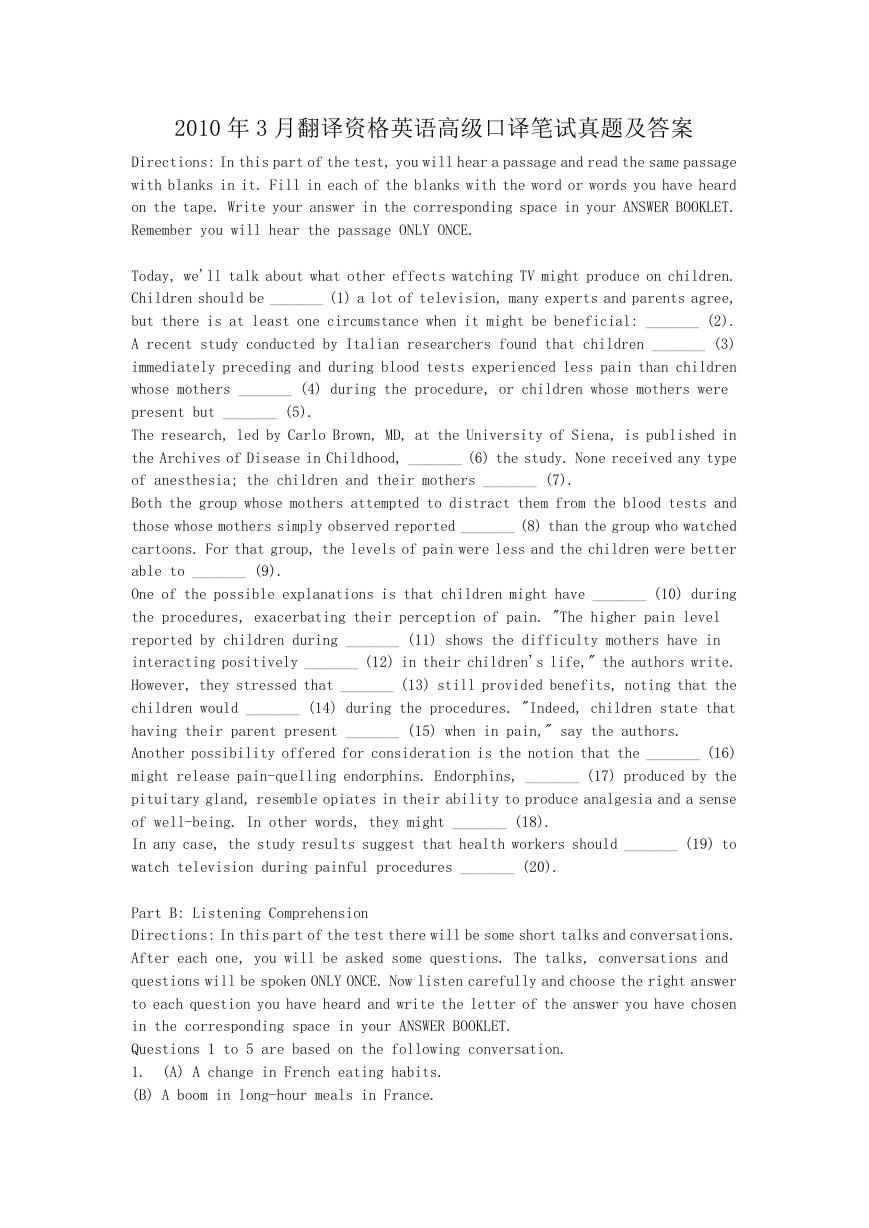
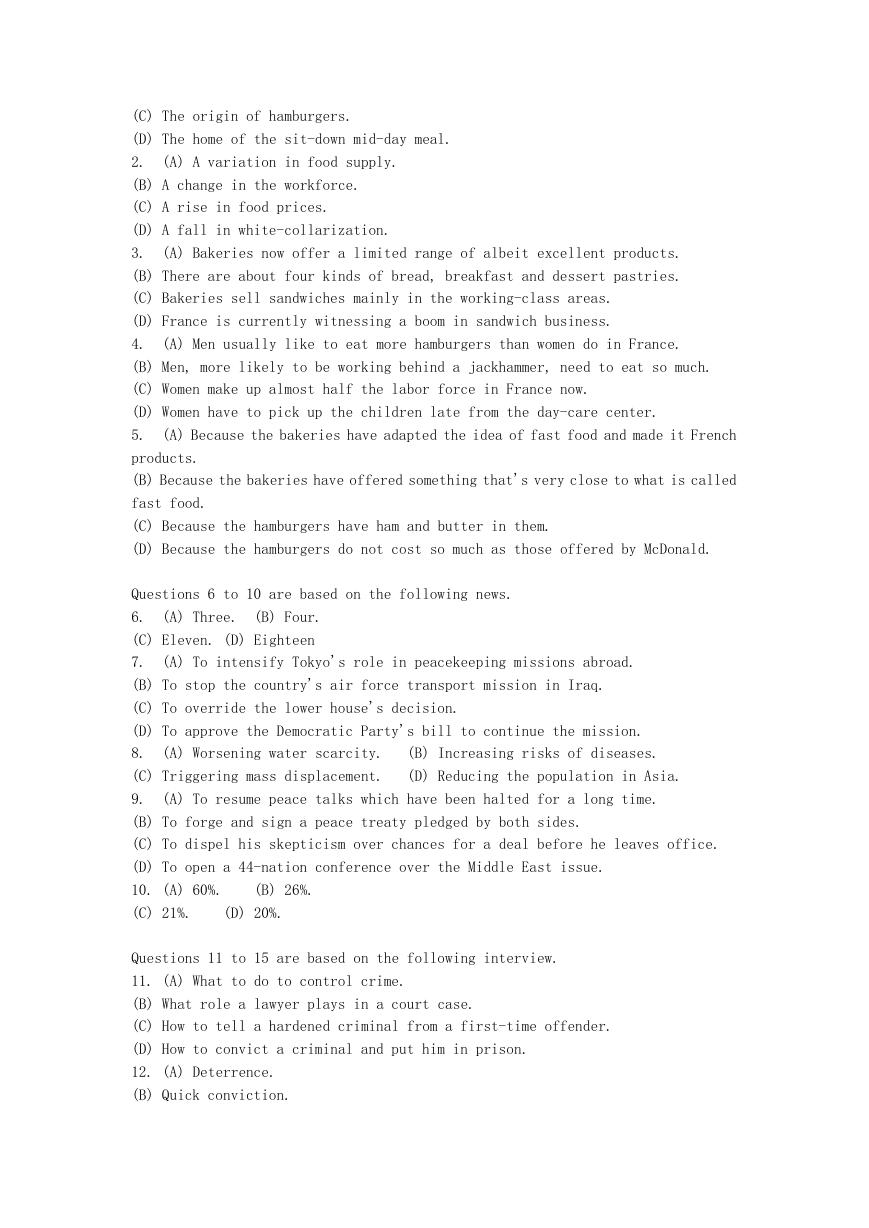
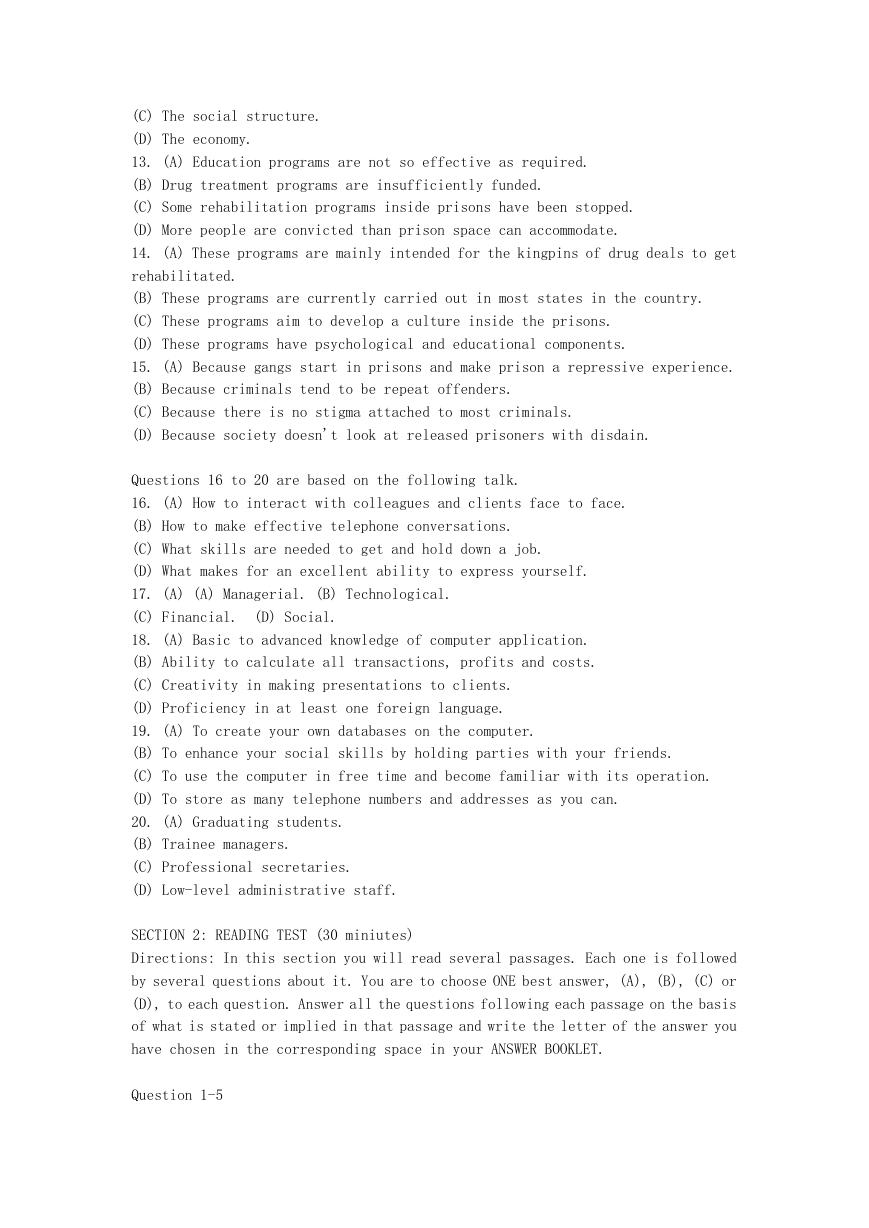
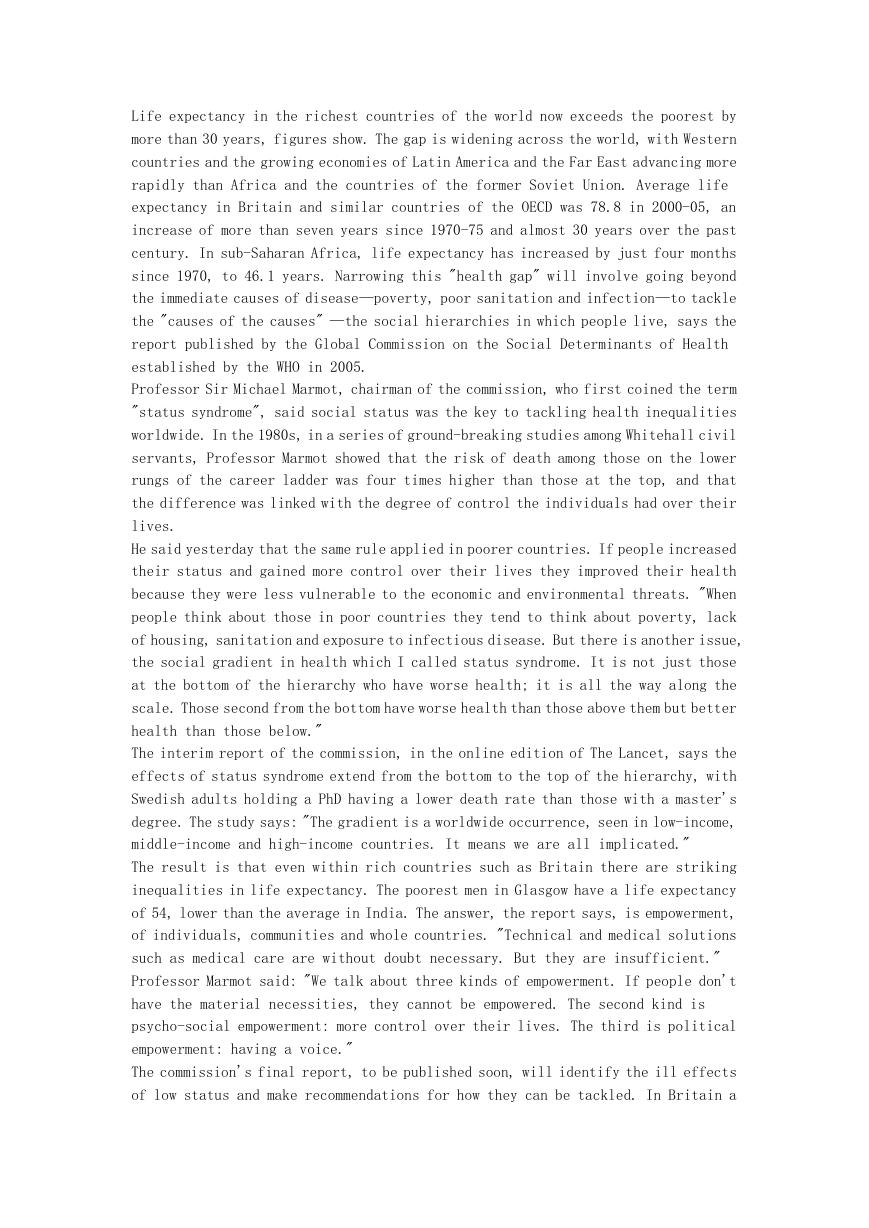
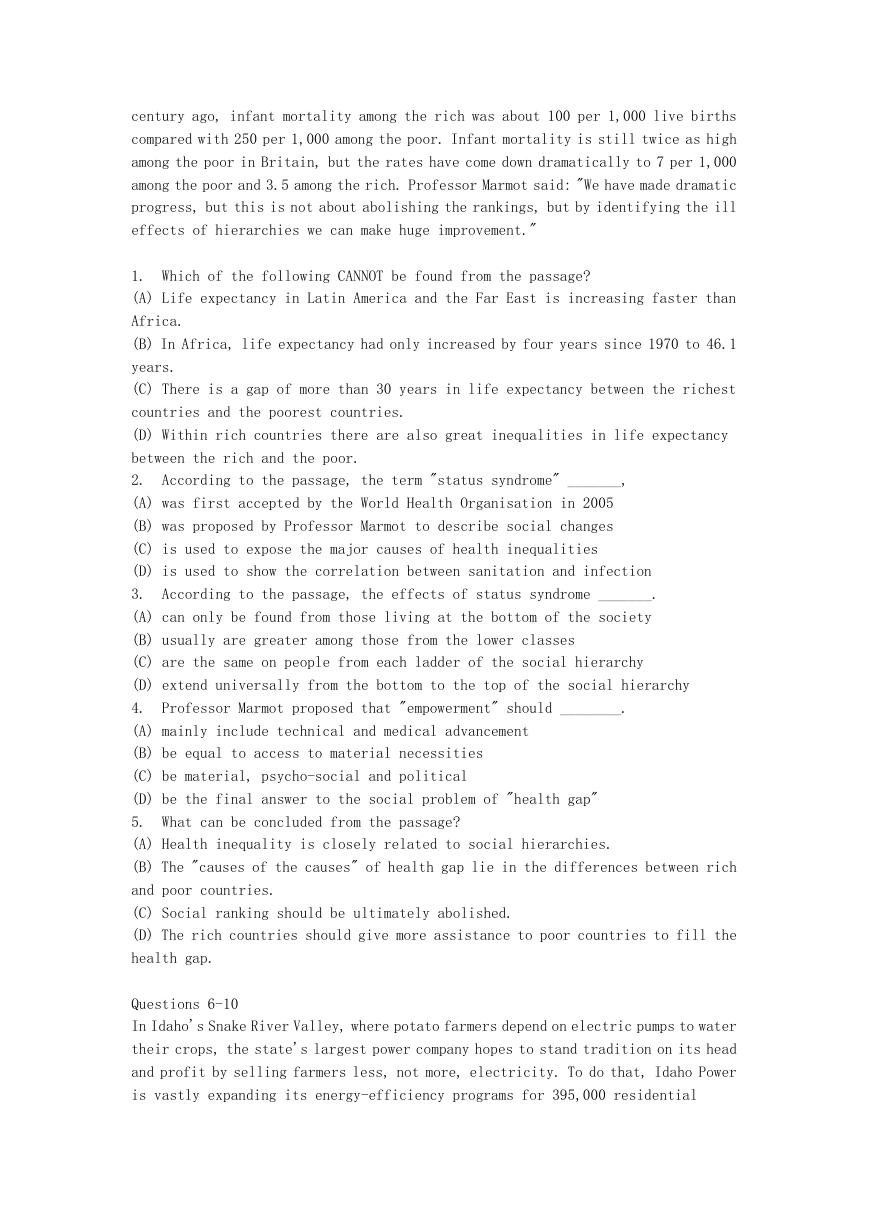
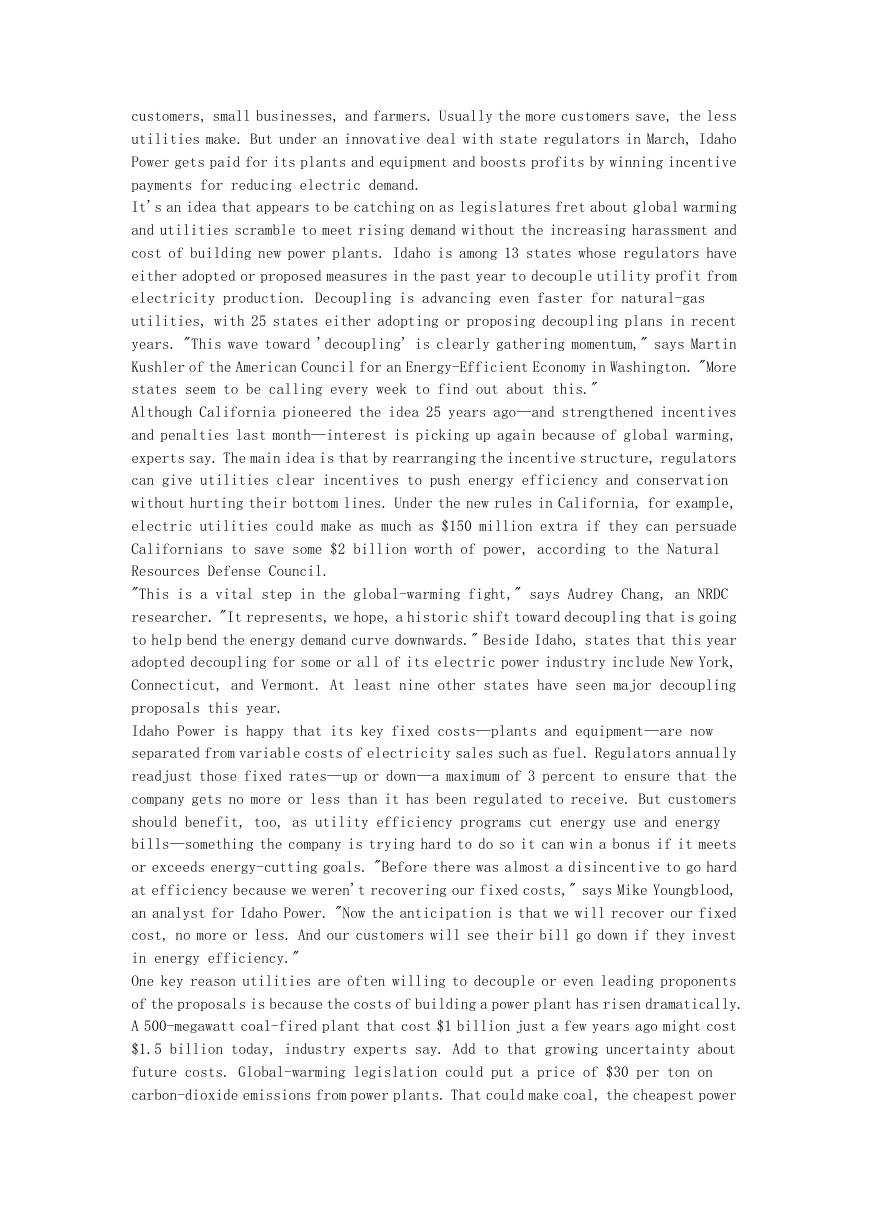
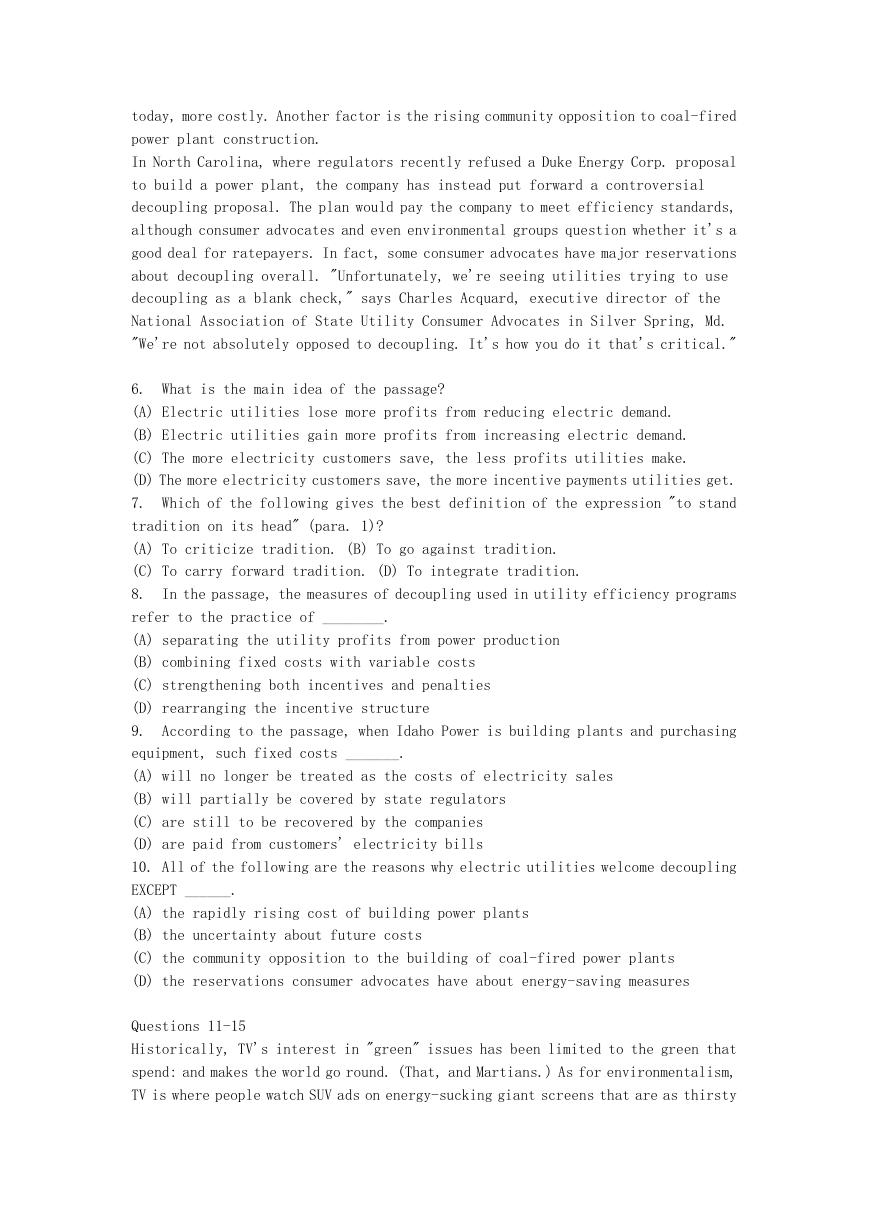
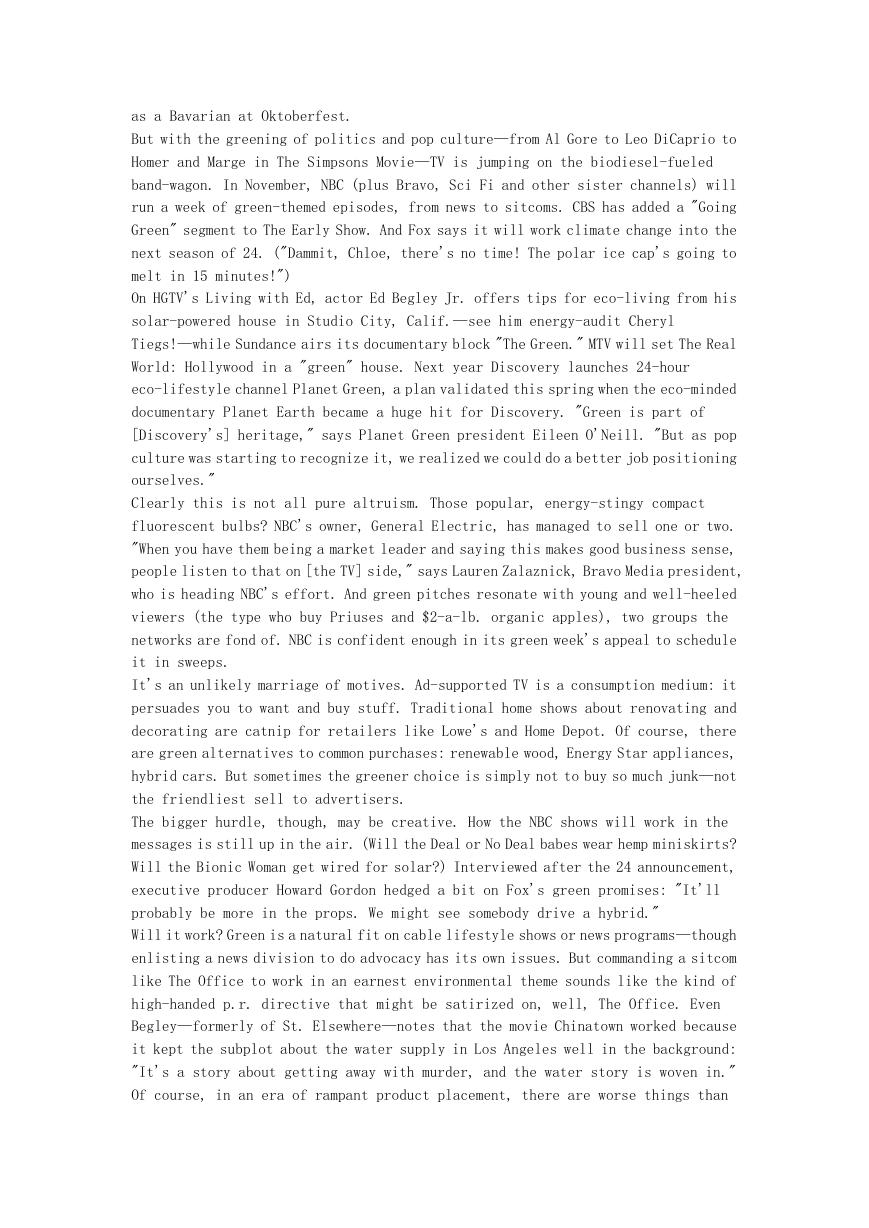








 2023年江西萍乡中考道德与法治真题及答案.doc
2023年江西萍乡中考道德与法治真题及答案.doc 2012年重庆南川中考生物真题及答案.doc
2012年重庆南川中考生物真题及答案.doc 2013年江西师范大学地理学综合及文艺理论基础考研真题.doc
2013年江西师范大学地理学综合及文艺理论基础考研真题.doc 2020年四川甘孜小升初语文真题及答案I卷.doc
2020年四川甘孜小升初语文真题及答案I卷.doc 2020年注册岩土工程师专业基础考试真题及答案.doc
2020年注册岩土工程师专业基础考试真题及答案.doc 2023-2024学年福建省厦门市九年级上学期数学月考试题及答案.doc
2023-2024学年福建省厦门市九年级上学期数学月考试题及答案.doc 2021-2022学年辽宁省沈阳市大东区九年级上学期语文期末试题及答案.doc
2021-2022学年辽宁省沈阳市大东区九年级上学期语文期末试题及答案.doc 2022-2023学年北京东城区初三第一学期物理期末试卷及答案.doc
2022-2023学年北京东城区初三第一学期物理期末试卷及答案.doc 2018上半年江西教师资格初中地理学科知识与教学能力真题及答案.doc
2018上半年江西教师资格初中地理学科知识与教学能力真题及答案.doc 2012年河北国家公务员申论考试真题及答案-省级.doc
2012年河北国家公务员申论考试真题及答案-省级.doc 2020-2021学年江苏省扬州市江都区邵樊片九年级上学期数学第一次质量检测试题及答案.doc
2020-2021学年江苏省扬州市江都区邵樊片九年级上学期数学第一次质量检测试题及答案.doc 2022下半年黑龙江教师资格证中学综合素质真题及答案.doc
2022下半年黑龙江教师资格证中学综合素质真题及答案.doc